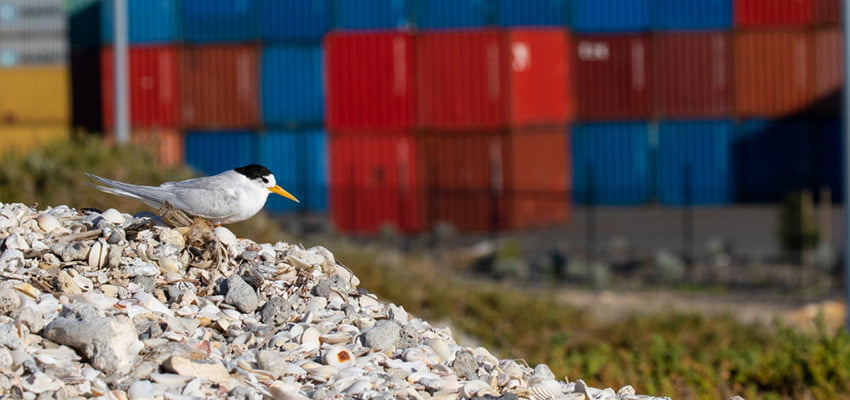A SANCTUARY established by Fremantle Ports on reclaimed land five years ago is playing an important role in the breeding life of the Australian fairy tern.
Claire Greenwell, who is researching a PhD on the birds, says the sanctuary is “the most important breeding site in the greater (Perth) metro region”.
Ms Greenwell says the breeding season is progressing well with about 220 nests found so far.
“The port sanctuary location is ideal for the terns but also critically provides opportunity for proactive pest management, site maintenance and convenient observation for research,” she said.
“Access is restricted to vehicles and people, which are a major cause of colony failure on many beaches and near river mouths. The chick production from the sanctuary is a major contributor for the whole south-west migratory population.”
Fairy terns are said to be vulnerable to foxes and feral cats with a cat wiping out a breeding attempt early this season in Mandurah, and a fox at Point Walter causing much damage.
Natural breeding sites can be unstable as they are exposed to natural disturbances, for storms and human disturbances.
Ms Greenwell’s research is supporting a broader Australian Bird and Bat Banding Scheme (ABBBS) project being led by the Conservation Council of Western Australia.
Fremantle Ports approached the CCWA before the 2015-16 breeding season about including Rous Head sanctuary in the project.
Now, after four years of banding, Rous Head tern ‘recaptures’ at other colonies across the south-west are said to be changing the understanding of tern movements, interchange, and population size.
“Researchers had always assumed there were separate sub-populations in the Mandurah-Bunbury area, the Swan River area (Rous Head and Point Walter) and offshore (Rottnest, Garden and Carnac islands),” Ms Greenwell said.
“Colonies were believed to be, to an extent, independent.”

